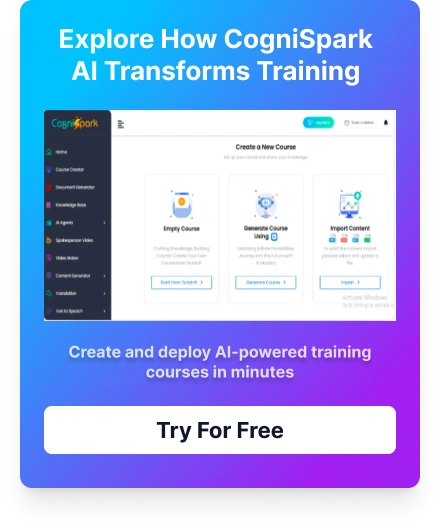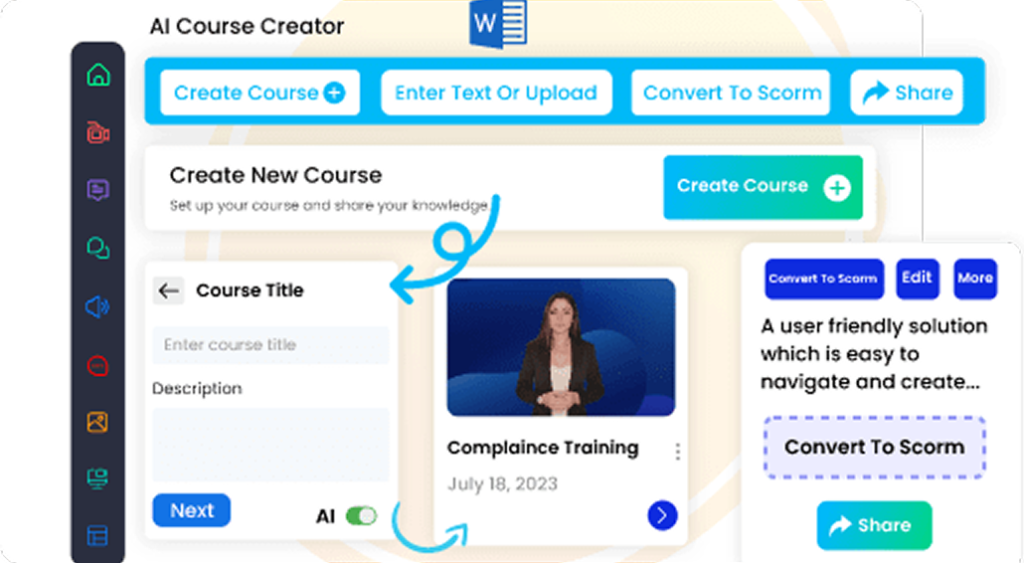Introduction: Mastering Audience Awareness and Engagement for Effective Communication and Training
In today’s fast-paced digital landscape, effective communication and training depend on a deep understanding of audience awareness and engagement. Whether delivering corporate training, educational content, or marketing messages, knowing how your audience perceives, responds to, and interacts with information is crucial for success. Audience awareness involves recognizing their needs, backgrounds, and expectations, while engagement focuses on actively capturing their interest and motivating participation.
Research shows that tailored communication strategies significantly boost learning retention and message impact. According to Harvard Business Review, personalized content can increase engagement by up to 50%. Moreover, understanding audience characteristics allows trainers and communicators to adapt their delivery methods, making content more relatable and accessible.
Audience awareness and engagement training plays a pivotal role in helping professionals enhance their credibility, improve knowledge transfer, and build trust with diverse audiences across all communication settings. This specialized training equips individuals with essential skills to create meaningful interactions and deliver presentations that truly resonate, making it the foundation for creating impactful, memorable experiences that drive results.
Understanding Audience Awareness
Effective communication begins with a thorough understanding of your audience. Audience awareness involves recognizing and analyzing the characteristics, needs, and preferences of those you aim to reach. This foundational step is essential for crafting messages that resonate, engage, and persuade effectively.
Why Audience Awareness Matters in Communication
Whether in marketing, corporate training, or public speaking, knowing your audience increases the likelihood of achieving your objectives. Understanding their background, challenges, and motivations helps make your messages more relevant and impactful. For example, an educator who understands learners’ cultural backgrounds can tailor examples and language, improving comprehension and retention.
Key Components of Audience Awareness
- Demographics: Includes age, gender, education, income, and occupation. Recognizing these traits helps customize content to match their maturity level, professional background, or socioeconomic status.
- Interests and Preferences: Knowing what your audience cares about allows for content that aligns with their passions, values, and industry challenges. For instance, a product launch can highlight features that appeal directly to target interests.
- Cultural Considerations: Awareness of cultural norms and sensitivities ensures respectful and effective communication. Ignoring these factors can cause misunderstandings; what is appropriate in one culture may be confusing in another.
Audience Awareness and Engagement
Enhance your ability to capture audience attention and create memorable experiences. Discover proven techniques to boost participation, drive engagement, and deliver presentations that truly resonate with any group.
The Fundamentals of Engagement Training
Engagement training is a vital aspect of effective communication. It equips individuals with skills to capture and sustain audience attention, creating more interactive and impactful learning or presentation experiences. This training enhances connections with colleagues, clients, or students, ultimately improving retention, motivation, and performance.
What Engagement Training Involves
It encompasses techniques like active listening, dynamic delivery, and engaging body language and vocal tone. Participants learn to recognize audience cues, adapt their messaging, and foster a conversational atmosphere that encourages participation and feedback. Practical exercises complement theoretical knowledge, enabling real-time application.
Why Engagement Training Is Important
In a world overloaded with information, capturing and maintaining attention is increasingly challenging. Engagement training improves clarity, builds rapport, and fosters trust. It reduces misunderstandings and disengagement, promoting a collaborative environment. Research indicates that engaging techniques lead to higher retention, better problem-solving, and increased motivation—making such training indispensable for professional growth.
Core Skills Developed in Engagement Training
- Active Listening: Engages fully with the speaker, paraphrases, asks questions, and provides non-verbal cues like nodding—establishing trust and reducing misunderstandings.
- Dynamic Delivery: Presents content energetically, varies pitch and pace, uses storytelling, and incorporates visual aids to maintain interest and inspire action.
- Additional Skills: Includes storytelling, positioning, and leveraging technology to enhance interaction. Developing these ensures more effective, memorable exchanges.
In summary, engagement training provides essential skills that help professionals connect authentically with audiences, resulting in more productive conversations, improved learning outcomes, and greater overall engagement.
Why Audience Awareness and Engagement Go Hand in Hand
Understanding your audience is the foundation of effective engagement strategies. Audience awareness involves gathering insights into their preferences, behaviors, needs, and pain points. With a clear picture, you can craft content and interactions that resonate, fostering authentic engagement.
The Symbiotic Relationship Between Awareness and Engagement
When you know your audience, you can anticipate their interests and respond proactively. For example, a fitness brand targeting busy professionals aged 30-45 might focus on quick workouts and time-saving wellness tips, increasing relevance and interaction—comments, shares, or conversions.
Practical Examples of Audience-Centric Engagement
- Personalized Email Campaigns: Segment subscriber lists based on demographics and behavior to send tailored offers, like skincare tips for customers over 40, boosting loyalty.
- Social Media Interaction: Use insights to craft posts on trending topics. A sustainable fashion retailer sharing about eco-friendly fabrics appeals directly to eco-conscious consumers, sparking conversations.
- Content Development: Produce blog posts, videos, or podcasts addressing specific challenges. A financial advisor creating content for millennials demonstrates awareness of their unique hurdles.
Explore Our eLearning Course Catalog
Access 100+ fully editable, SCORM-compatible courses featuring an integrated AI Tutor and an in-built authoring tool. Seamlessly compatible with any LMS, these courses are designed to elevate your training programs.
Explore Course CatalogStrategies for Building Audience Awareness in Writing and Training
To build effective audience awareness in both writing and employee engagement training, it’s important to focus on several strategies. By understanding the audience’s needs, learning styles, and expectations, you can craft messages and learning experiences that are more impactful, relevant, and results-driven.
1. Know Your Audience
Before creating any content, gather information about your audience. This could include demographics, job roles, learning preferences, and previous experiences. The more you know about your audience, the better you can tailor your communication to meet their needs. Understanding their pain points and motivations allows you to deliver messages that resonate and create value. In the context of employee training, this means developing modules that align with their goals and address specific workplace challenges.
2. Customize Content to Fit Audience Preferences
Whether writing an email or conducting training, always tailor the content to the audience’s preferences. For example, employees in technical roles may prefer detailed, data-driven training, while those in customer-facing positions may need more practical, real-world examples. Consider the tone, language, and format that will best capture attention and maintain interest. Personalization in writing and training increases relevance, which boosts comprehension, retention, and engagement.
3. Utilize Interactive and Engaging Methods
Interactive elements like quizzes, role-play, group discussions, and real-world scenarios can engage your audience and improve learning outcomes. The more interactive the training, the higher the engagement. Writing content that invites feedback or prompts action also boosts audience involvement. In training environments, using multimedia elements and hands-on activities ensures that different learning styles are accommodated, leading to better overall effectiveness.
Ultimately, strong audience awareness builds trust, clarity, and connection—key components for both impactful writing and successful training sessions. By applying these strategies consistently, organizations can foster meaningful communication and long-term employee development.
Audience Awareness and Engagement Training: Sharpening Communication for Maximum Impact
Whether in presentations, client interactions, or team meetings, the ability to read your audience and keep them engaged is crucial for effective communication. That’s where Audience Awareness and Engagement Training plays a transformative role—helping employees fine-tune their message, adapt delivery styles, and connect meaningfully with diverse audiences.
CogniSpark AI elevates this training with its intelligent AI Tutor, which guides learners through real-world communication scenarios. From identifying non-verbal cues to adjusting tone and content based on audience needs, employees receive instant feedback that boosts their responsiveness and confidence.
With its built-in authoring tool, organizations can customize training modules to reflect their brand voice, industry context, and typical communication situations—be it client-facing roles, leadership presentations, or internal collaboration. The training adapts to varying experience levels, making it suitable for both emerging professionals and seasoned communicators.
CogniSpark AI is also LMS-compatible, ensuring seamless integration into existing learning environments. Progress tracking, quizzes, and scenario-based assessments make it easy to measure engagement and communication effectiveness over time.
Conclusion
Organizations that invest in audience awareness and engagement training for employees witness measurable transformations in their communication effectiveness and business outcomes. Professionals equipped with these skills consistently deliver more impactful presentations, build stronger client relationships, and achieve higher conversion rates across all communication channels.
Smart & Editable Course Catalog
Stop struggling with rigid course listings. Paradiso’s Course Catalog is fully customizable, works with any LMS, and gives you the power to update and manage courses with ease.























